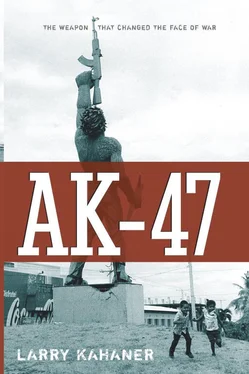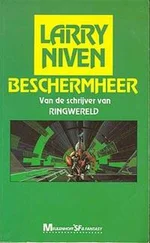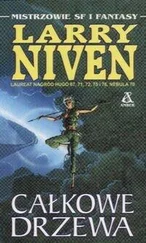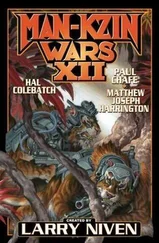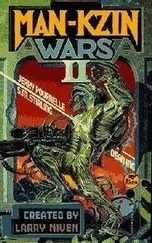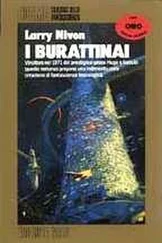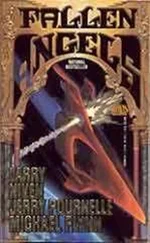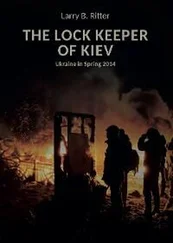Larry Kahaner - AK-47
Здесь есть возможность читать онлайн «Larry Kahaner - AK-47» весь текст электронной книги совершенно бесплатно (целиком полную версию без сокращений). В некоторых случаях можно слушать аудио, скачать через торрент в формате fb2 и присутствует краткое содержание. Город: Hoboken, Год выпуска: 2007, ISBN: 2007, Издательство: John Wiley & Sons, Inc., Жанр: История, military_history, на английском языке. Описание произведения, (предисловие) а так же отзывы посетителей доступны на портале библиотеки ЛибКат.
- Название:AK-47
- Автор:
- Издательство:John Wiley & Sons, Inc.
- Жанр:
- Год:2007
- Город:Hoboken
- ISBN:9780470315668
- Рейтинг книги:3 / 5. Голосов: 1
-
Избранное:Добавить в избранное
- Отзывы:
-
Ваша оценка:
- 60
- 1
- 2
- 3
- 4
- 5
AK-47: краткое содержание, описание и аннотация
Предлагаем к чтению аннотацию, описание, краткое содержание или предисловие (зависит от того, что написал сам автор книги «AK-47»). Если вы не нашли необходимую информацию о книге — напишите в комментариях, мы постараемся отыскать её.
AK-47 — читать онлайн бесплатно полную книгу (весь текст) целиком
Ниже представлен текст книги, разбитый по страницам. Система сохранения места последней прочитанной страницы, позволяет с удобством читать онлайн бесплатно книгу «AK-47», без необходимости каждый раз заново искать на чём Вы остановились. Поставьте закладку, и сможете в любой момент перейти на страницу, на которой закончили чтение.
Интервал:
Закладка:
In a perverted context, child soldiers fit Taylor’s needs perfectly. They were easy to recruit, naive enough to stay within the fold, and armed with an AK they were just as lethal as an adult. Even the youngest boys, barely able to hold the rifle, could spray bullets and hit a human target. Psychologically, child soldiers held other advantages. Youth made them feel invulnerable. Coupled with natural teen bravado and an undeveloped conscience, children offered a deadly combination in a guerrilla fighter. As one Liberian militia commander put it, “Don’t overlook them. They can fight more than we big people…. It is hard for them to just retreat.”
For opposing forces, seeing a child holding a weapon was unnerving, and there were several instances in other African countries such as Sierra Leone, in which Western soldiers sent as peacekeepers did not have the heart to fire at children even though they were deadly combatants.
The Small Boy Units were often looked upon with favor by their adult rebel comrades. Not only did they add numbers to the ranks, but their very existence seemed to be spiritually mandated. As one adult soldier put it, “God must think that [President] Doe is oppressive, too, because he sent us all these small boys to fight.”
Nobody knows how Taylor got the idea for the Small Boy Units, but it was indeed inspired. “Taylor had unleashed the most deadly combat system of the current epoch, the adolescent human male equipped with a Kalashnikov—an AK-47 assault rifle,” noted Michael Klare, professor of peace and world security studies at Hampshire College in Amherst, Massachusetts.
Within seven months of his invasion, barely noticed by the outside world, Taylor and an estimated five thousand guerillas reached the outskirts of Monrovia with their sights set on the presidential mansion where Doe had hunkered down. Despite his oppressive regime, Doe’s government had received more than half a billion dollars from the United States since the 1980s. In exchange, Doe pushed out the Soviets and permitted U.S. access to ports and land.
During the capital’s siege, U.S. Marines offered Doe safe passage out of Liberia in August along with U.S. citizens and other foreign nationals, but he refused. Doe’s rule ended during a shootout with a breakaway faction of Taylor’s NPFL group led by Prince Yormie Johnson even though the president was under the protection of a four-thousand-man peacekeeping force sent by the six-nation Economic Community of West African States (ECOWAS). Johnson seized the opportunity to capture Doe when Taylor’s soldiers temporarily faltered in their forward progress just outside the city. A wounded Doe was carried away to Johnson’s camp, where he later died either from his gunshot wounds or from torture and execution, depending upon who told the story. His mutilated body was put on public display.
The rift between Taylor and Johnson led to six more years of bloodshed as seven rival factions, separated mainly along tribal lines, joined the conflict and fought for control of the country’s natural resources, including iron, timber, and rubber. The brutal warfare continued as more light weapons reached the combatants. One of the last and darkest moments was the April 6, 1996, siege of Monrovia, during which an estimated three thousand people were killed as five factions converged on the capital. After several unsuccessful cease-fires brokered by ECOWAS and others, major hostilities finally ended. In 1997, elections were held.
Some international observers, including former U.S. president Jimmy Carter, deemed the elections fair, and Taylor received 75 percent of the votes. Others believed that citizens were afraid to vote for anyone else. Moreover, many Liberians feared that Taylor would resume the war if he was not elected.
With the elections drawing world attention, those outside Liberia began to understand the staggering effects of the war. More than 200,000 people were killed, most of them civilians, and another 1.25 million became refugees. Through the use of his AK-BASED system of warfare and intimidation, Taylor became one of the richest warlords in Africa, pulling in $300 to $400 million in personal income through looting and illegal trading of commodities and arms.
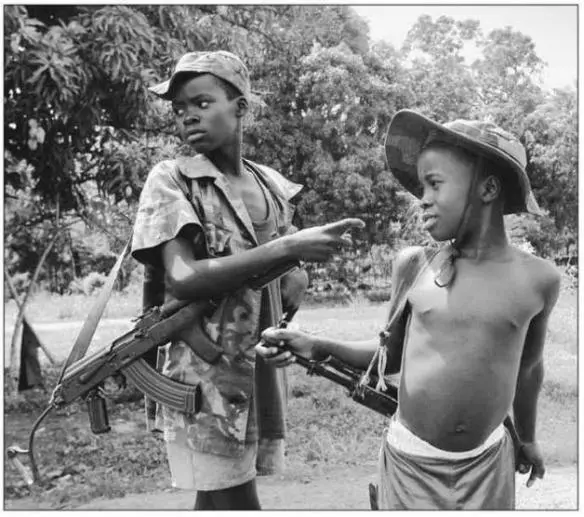
The impact on a generation of children was devastating. According to the United Nations Children’s Fund (UNICEF), fifteen thousand to twenty thousand children participated in the Liberian civil war between 1989 and 1997; perhaps as many as 60 percent of the combatants in some factions were under eighteen, with some as young as nine years old.
Unfortunately, Liberia’s violence did not end with Taylor’s election. With the country’s infrastructure in shambles, heavily armed gangs continued to roam the countryside, stealing food and other necessities. People were afraid to give up their AKs, which now represented a way to make a living, albeit a ruthless one, in a country with little opportunity for legitimate work.
Despite a UN embargo imposed on Liberia in 1992, small arms continued to enter the country. Indeed, the United Nations charged that Taylor was a major arms conduit in Africa, operating with impunity and giving shelter to well-known arms dealers such as Gus Kouen-Hoven, a Dutch national who ran the Hotel Africa outside Monrovia. Also prospering under Taylor’s largesse was the notorious Russian trafficker Victor Bout, one of the world’s most active and notorious arms dealers. Bout’s specialty was handling small arms from the Soviet Union and former Soviet states. Another Taylor-connected trafficker was the Ukrainian Leonid Minin, who, UN officials said, supplied arms to Taylor for money but also to win timber export contracts for his company, Exotic Tropical Timber Enterprise. These men made repeated appearances throughout Africa, selling small arms, mainly AKs and RPGs, to insurgents, rebels, and even legitimate armies.
In 1999, Taylor’s regime faced opposition from a group better organized and more effective than the others he had encountered. Liberians United for Reconciliation and Democracy, commonly known as LURD, reportedly backed by U.S. ally Guinea, was consolidating control in the northern part of Liberia using many of the same tactics and engaging in similar atrocities as Taylor. Several other anti-Taylor groups emerged, including the Movement for Democracy in Liberia (MODEL), allegedly backed by neighboring Ivory Coast, which maintained a stronghold in the southern part of the country. Slowly and amid continued bloodshed, Taylor’s grip on the nation was slipping away. In desperation, Taylor launched Operation No Living Thing, a campaign of atrocities designed to deter civilians from supporting and aiding LURD, whose ranks had swelled with Sierra Leonean militia wanting to destroy Taylor’s regime. Taylor’s terror program failed, and by the end of 2003 he controlled less than a third of Liberia.
A UN tribunal issued a warrant in June 2003 for Taylor, charging that he had exported his brand of AK-based carnage to neighboring Sierra Leone. His instrument there was the Revolutionary United Front (RUF), a group that he surreptitiously funded through the sale of weapons and timber. Again, unlike traditional conflicts, neither territory nor ideology were goals. Taylor’s interest in Sierra Leone was its diamond mines, one of the largest deposits in the world. In March 1991, the RUF, under the command of former army corporal Foday Sankoh, gained control of mines in the Kone district. A small band of men, mainly armed with AKs, pushed the government army back toward the capital city of Freetown. Widespread civil war ensued, but this time it was more brutal than anyone had envisioned, even eclipsing Liberia in its depravity.
Читать дальшеИнтервал:
Закладка:
Похожие книги на «AK-47»
Представляем Вашему вниманию похожие книги на «AK-47» списком для выбора. Мы отобрали схожую по названию и смыслу литературу в надежде предоставить читателям больше вариантов отыскать новые, интересные, ещё непрочитанные произведения.
Обсуждение, отзывы о книге «AK-47» и просто собственные мнения читателей. Оставьте ваши комментарии, напишите, что Вы думаете о произведении, его смысле или главных героях. Укажите что конкретно понравилось, а что нет, и почему Вы так считаете.
